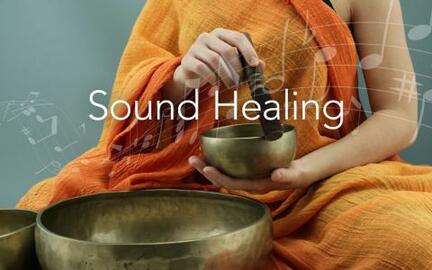Using SleepPhones® Sleep Headphones For Sound Healing
Can Sound Healing Therapy Help Me Sleep?

Over 60 percent of people suffer from poor sleep. Generally, one night of restlessness won’t have long-term consequences, but consistently poor shuteye can lead to significant mental and physical conditions such as heart disease, high blood pressure, depression, and anxiety.
Rather than turning to medication, people are exploring how music and sound can address their barriers to sleep. It’s important to note that this strategy isn’t just a fad, either. Ancient civilizations strongly believed in the power of music and used it for healing rituals.
However, it’s essential to discuss the option of music therapy and sound healing with your doctor before experimenting. While alternative treatments for sleep disorders may be helpful to some people, it’s important to ensure it’s right for you.
What Is Sound Therapy?
Sound therapy is an overarching term that refers to sensory treatments that use music and sound as therapeutic tools. Traditional sound therapy often includes instruments such as singing/sound bowls, gongs, chimes, and a relaxing voice.
However, depending on the goal of the listener and the practitioner, modern sound healing therapy may include a variety of sounds including:
Ambient Music
ASMR
Binaural Beats
Guided Meditations
Nature Sounds
White Noise
History of Sound Therapy
Some researchers believe sound healing can be traced back over 40,000 years to aboriginal tribes in Australia and others point its origins to ancient Tibet.
|
A quick aside: As of recently, there has emerged some interesting evidence that points to the fact that the “Tibetan singing bowl,” which is almost synonymous with sound healing, doesn’t actually have ancient Tibetan roots at all. In fact, the earliest recorded association with Tibet and the singing bowl was in the 1970s. However, this is not to say that Tibet doesn’t have a rich musical culture, but the healing instruments that scholars have recorded over the years are more in line with bells and chimes, rather than bowls. In ancient Japan, bow-shaped instruments called “rin singing bowls” are known to have been used in ancient healing rituals. |
Many cultures believe in music's healing abilities. Chanting, drumming, and singing are key elements of Native American and African healing ceremonies. The Peruvian Wacheripi tribe uses unique songs for different afflictions such as snake bites, headaches, and fevers. Grecians appealed to the gods through music to end conflicts and plagues.
While music has ancient roots, the formal study of music’s impacts on health only dates back to the 19th century. In the 1880s, a Parisian researcher named Diogel set out to discover whether or not patients who listened to live musicians could glean any health benefits. His findings showed that music could lower blood pressure, decrease heart rate, and calm the nervous system.
But as we gained more knowledge of disease prevention, invented better medical tools, and discovered vaccines, the scientific discoveries of the post-industrial revolution pushed music aided-healing aside. However, as more is known as to the potential side effects of sleep medications, people are finding themselves returning to more holistic treatments and therapies. With today’s advances in headphone technology and science-driven sleep sounds, it’s easier than ever to explore the power of sound healing and music therapy.
How Does Sound Therapy Work?
Listening to pleasing music and sounds can release dopamine and serotonin, two neurotransmitters that are important for mood regulation, focus, and of course, sleep. There is also another school of thought that points to a phenomenon called brainwave entrainment.
Brainwave entrainment, also referred to as brainwave synchronization, is a method of stimulating the brain with sound (light and electromagnets can also be used). The goal behind entrainment/synchronization is to align one’s brain waves with brain-state frequencies associated with relaxation, happiness, and sleep.
Reported Effects of Sound Healing
New-age claims of sound healing’s effect on the body’s “energy” don’t quite hold up to peer review, although science has highlighted a variety of benefits that are research-based. For instance, a recent study published in PLoS One found that subjects who listened to relaxing music before a stress test not only performed better, but also recovered faster than those who listened to sounds of “rippling water” and those with no acoustic stimulation.
Another 2016 study published in the Journal of Evidence-Based Integrative Medicine suggested that sound meditation by way of a singing bowl can profoundly reduce tension, anger, anxiety, and depression, while also boosting feelings of spiritual-well being.
While more research is still needed to determine the exact mechanisms behind sound therapy, those who use it report:
- Reduced tension
- Reduced anxiety
- Improved sleep quality
- Improved memory
- Reduced pain
- Lowered blood pressure
- Improved blood circulation
- Reduced depression
How to Use Sound Healing for Sleep
Listening to music and healing sounds can help you address issues that impact sleep quality, such as anxiety, insomnia, and pain. Try incorporating it into your sleep routine by:
-
Finding sounds that help you relax. Consider trying out the AcousticSheep Harmony Project, which algorithmically finds the right sounds and tunes for you.
-
Using a pair of headphones that are designed to be slept in. Earbuds and bulky over-the-ear headphones are uncomfortable to wear to bed.
-
Tune out distractions. Music and healing sounds can drown out intrusive noises that interfere with your sleep. However, we recommend turning off smartphone notifications while trying to fall asleep.
Sounds That Heal
For millennia, music and sound has been used across different cultures for healing. That impact remains as relevant today as it was then. If you’re ready to try sound therapy for yourself, consider using the world’s most comfortable headphone for sleeping, SleepPhones® headphones.

